
Journal of Thermal Science
Scope & Guideline
Elevating research standards in thermal science since 1992.
Introduction
Aims and Scopes
- Heat Transfer Mechanisms:
The journal covers a wide range of topics related to heat transfer mechanisms, including conduction, convection, and radiation. Research articles often explore innovative methods to enhance heat transfer efficiency in various applications. - Thermal Management in Engineering:
There is a significant emphasis on thermal management systems in engineering applications, particularly in electronics cooling, automotive, and aerospace industries. Studies focus on optimizing cooling systems and developing novel materials to improve thermal performance. - Phase Change Materials and Thermal Energy Storage:
Research on phase change materials (PCMs) and their applications in thermal energy storage systems is a core area of focus. The journal publishes articles that explore the thermal properties, modeling, and performance of PCMs in various contexts. - Nanofluids and Hybrid Materials:
The use of nanofluids and hybrid materials for enhanced thermal performance is a growing area of interest. The journal encourages studies that investigate the thermal properties and applications of nanofluids in heat exchangers and other thermal systems. - Computational Fluid Dynamics (CFD) Applications:
Many papers employ computational fluid dynamics (CFD) to simulate and analyze thermal and fluid flow phenomena. This includes modeling complex geometries and conditions to predict heat transfer behaviors in various systems. - Experimental Techniques in Thermal Science:
The journal promotes the use of advanced experimental techniques to investigate thermal phenomena, including infrared thermography, laser-based methods, and other innovative measurement techniques.
Trending and Emerging
- Machine Learning and AI in Thermal Science:
There is a notable increase in research integrating machine learning and artificial intelligence to predict thermal behaviors and optimize thermal systems. This trend showcases the journal's embrace of modern computational techniques to enhance traditional thermal science. - Sustainable and Renewable Energy Applications:
Research related to sustainable energy solutions, such as solar thermal systems and energy storage technologies, is on the rise. This reflects a broader societal push towards renewable energy and efficient thermal management systems. - Advanced Cooling Technologies:
Innovative cooling technologies, including hybrid cooling systems that combine different cooling methods (e.g., liquid, air, and phase change), are increasingly featured. These studies aim to improve thermal management in high-performance applications. - Thermal Management in Electronics:
As electronic devices become more powerful and compact, research dedicated to thermal management solutions in electronics is expanding. This includes studies on novel heat sink designs, thermal interface materials, and cooling systems tailored for specific applications. - Nanotechnology in Thermal Applications:
The application of nanotechnology in enhancing thermal properties of materials is gaining popularity. Research focuses on the development and characterization of nanofluids and nanostructured materials for improved heat transfer.
Declining or Waning
- Traditional Heat Exchanger Designs:
Research on conventional heat exchanger designs has seen a decline as newer technologies and materials, such as microchannels and nanofluids, gain more attention. The focus has shifted towards optimizing these advanced systems rather than improving traditional designs. - Basic Thermodynamics:
Studies that cover fundamental thermodynamic principles without a clear application or innovative approach have become less common. The journal's audience seems to favor research that offers practical solutions or advancements in thermal science. - Single-Phase Cooling Techniques:
Research focused solely on single-phase cooling techniques is waning, as there is increasing interest in two-phase cooling systems and hybrid cooling strategies that provide better thermal management. - Non-advanced Materials:
Research utilizing non-advanced or traditional materials for thermal applications is declining. There is a shift towards exploring novel materials, composites, and nanomaterials that offer superior thermal properties.
Similar Journals

THERMAL ENGINEERING
Pioneering Research in Energy and Power EngineeringTHERMAL ENGINEERING is a premier journal dedicated to advancing the field of thermal engineering, with particular importance in the domains of Energy Engineering, Nuclear Energy, and Power Technology. Published by PLEIADES PUBLISHING INC, this esteemed journal has been providing significant scholarly contributions since its inception, with its converged years spanning from 1970 to 2024. Though currently non-open access, the journal presents a unique avenue for researchers, professionals, and students to explore groundbreaking research and innovative solutions related to energy systems and thermal processes. With a notable impact factor and positioned in the Q3 quartile for both Energy Engineering and Nuclear Energy, THERMAL ENGINEERING ensures the dissemination of high-quality research with a global reach, making it an essential resource for those looking to stay at the forefront of essential energy technologies and engineering advancements.

International Journal of Heat and Technology
Connecting Academia and Industry through Heat ResearchThe International Journal of Heat and Technology is a premier academic publication dedicated to the dissemination of innovative research in the fields of thermal engineering, fluid mechanics, and condensed matter physics. Published by the INT INFORMATION & ENGINEERING TECHNOLOGY ASSOCIATION and based in Italy, this journal has been a significant resource for researchers and professionals since its inception in 1983, with a commitment to advancing knowledge until 2024. With an impact factor that reflects its relevance, the journal encompasses diverse topics within its scope, bridging gaps between theoretical research and practical applications. Although currently not open access, the journal provides valuable insights into the nuances of heat transfer, flow dynamics, and material properties, making it a critical reference for academia and industry alike. The journal's Scopus rankings position it within the competitive landscape of chemical and mechanical engineering, highlighting its contribution to advancing these fields. We invite scholars, professionals, and students to engage with the rich content provided within its pages, to foster a deeper understanding of heat and technology in our rapidly evolving world.
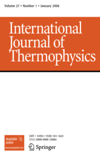
INTERNATIONAL JOURNAL OF THERMOPHYSICS
Bridging Theory and Application in ThermophysicsInternational Journal of Thermophysics, published by Springer/Plenum Publishers, is a premier platform for the dissemination of high-quality research in the field of thermophysics, particularly focusing on the intricate relationships between thermal properties and their applications across various scientific disciplines. With an ISSN of 0195-928X and an E-ISSN of 1572-9567, the journal has established a respected presence in the academic community since its inception in 1980, with a converged publication timeline extending to 2024. Categorized in the Q2 quartile for Condensed Matter Physics in 2023 and maintaining impressive Scopus rankings—such as #39 in Fluid Flow and Transfer Processes and #178 in Condensed Matter Physics—the journal serves as a vital resource for researchers and professionals aiming to advance knowledge in the thermal sciences. Though not an open-access journal, it remains accessible through institutional subscriptions. The International Journal of Thermophysics is committed to fostering innovative research and interdisciplinary collaboration, ensuring that it remains at the forefront of thermophysical studies.
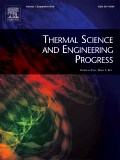
Thermal Science and Engineering Progress
Pioneering research in energy conversion and management.Thermal Science and Engineering Progress is a premier peer-reviewed journal published by ELSEVIER, established to bridge the gap between theoretical and practical advancements within the fields of thermal science and engineering. Since its inception in 2017, this esteemed journal has rapidly ascended to a Q1 ranking in the category of Fluid Flow and Transfer Processes, positioning it among the top 17 of 96 journals in this discipline, as reflected by its impressive 82nd percentile ranking in Scopus. With a focus on disseminating high-impact research, Thermal Science and Engineering Progress aims to foster innovation and collaboration by publishing cutting-edge studies that address both contemporary challenges and future directions in thermal management, energy conversion, and heat transfer technologies. Researchers, professionals, and students alike are invited to explore the wealth of knowledge contained within its pages, which are accessible from its headquarters in Amsterdam, Netherlands. This journal plays a critical role in advancing technological progress and fostering a deeper understanding of thermal processes, making it an essential resource for anyone dedicated to these crucial areas of study.
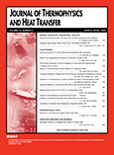
JOURNAL OF THERMOPHYSICS AND HEAT TRANSFER
Bridging Theory and Experiment in Heat TransferJOURNAL OF THERMOPHYSICS AND HEAT TRANSFER, published by the American Institute of Aeronautics and Astronautics, serves as a vital platform for the dissemination of cutting-edge research in the fields of thermophysics and heat transfer. With an ISSN of 0887-8722 and an E-ISSN of 1533-6808, this journal has been pivotal in enhancing our understanding of heat transfer mechanisms since its inception in 1987, continuing through 2024. It occupies a noteworthy position in various academic categories, boasting Q2 rankings in both Fluid Flow and Transfer Processes and Mechanical Engineering, reflecting its significant contribution to the engineering and physical sciences community. Although it currently does not offer Open Access options, the journal’s repository of rigorous peer-reviewed articles remains accessible to researchers, professionals, and students eager to expand their knowledge and apply innovative findings in aerospace, condensed matter physics, and planetary sciences. Emphasizing both theoretical and experimental approaches, the JOURNAL OF THERMOPHYSICS AND HEAT TRANSFER remains an indispensable resource for advancing the frontiers of engineering and applied sciences.

Computational Thermal Sciences
Bridging Theory and Application in Thermal SciencesComputational Thermal Sciences, an esteemed journal published by BEGELL HOUSE INC, presents cutting-edge research at the intersection of computational mathematics, energy engineering, and fluid dynamics. With an ISSN of 1940-2503 and an E-ISSN of 1940-2554, this journal aims to disseminate high-quality research articles, reviews, and methodologies that improve our understanding of thermal processes and their applications. Renowned for its solid impact in the field, it holds a Q3 ranking in multiple categories including Computational Mathematics and Energy Engineering for 2023. As the field evolves, the journal continues to play a pivotal role in bridging theoretical research with practical innovations, thereby catering to a diverse audience of researchers, professionals, and students. Although it operates on a subscription model, the journal ensures accessibility to significant contributions in thermal sciences from 2009 to 2024, fostering an environment of knowledge sharing and collaboration.
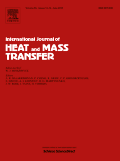
INTERNATIONAL JOURNAL OF HEAT AND MASS TRANSFER
Fostering Cutting-Edge Discussions in Thermal DynamicsINTERNATIONAL JOURNAL OF HEAT AND MASS TRANSFER is a premier, peer-reviewed academic journal published by PERGAMON-ELSEVIER SCIENCE LTD, focusing on the vital fields of condensed matter physics, fluid flow, and transfer processes, as well as mechanical engineering. With an impressive impact factor and consistently ranked in the Q1 quartile across multiple engineering and physics categories, this journal stands out for its rigorous scholarship and relevance to advancements in heat and mass transfer phenomena. Spanning from 1960 to 2024, it serves as a critical platform for researchers and professionals aiming to disseminate innovative findings and foster cutting-edge discussions in these interconnected domains. Though it operates on a subscription model, readers benefit from a comprehensive archive that covers seminal studies and contemporary advancements. Academics and practitioners alike can deepen their understanding of the complex interplay between heat and mass transfer, which is essential for numerous applications in engineering and scientific research.
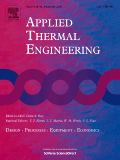
APPLIED THERMAL ENGINEERING
Exploring the forefront of thermal engineering breakthroughs.Applied Thermal Engineering is a leading international journal dedicated to the field of thermal engineering, published by Pergamon-Elsevier Science Ltd. With an impressive impact factor indicating its significance in the academic community, this journal focuses on innovative research and developments related to energy engineering, fluid flow, and transfer processes, as well as manufacturing and mechanical engineering. Being indexed in top quartiles (Q1) across multiple categories, it ranks exceptionally well on platforms like Scopus, ensuring that contributors reach a wide and relevant audience. The journal supports both open access and subscription options, promoting the dissemination of vital research findings from 1996 to 2024. With its commitment to advancing the discipline and implementing rigorous peer-review processes, Applied Thermal Engineering serves as an essential resource for researchers, industry professionals, and students aiming to stay abreast of the latest advancements and applied methodologies in thermal science.
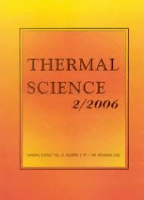
Thermal Science
Transforming energy challenges into sustainable solutions.Thermal Science is an esteemed open-access journal published by the Vinca Institute of Nuclear Sciences in Serbia. With a rich focus on the field of thermal science, this journal has established itself as a vital resource for researchers and professionals interested in the dynamics of energy, renewable energy systems, and environmental sustainability. Since its inception in 2001, Thermal Science has dedicated itself to disseminating high-quality research that addresses the challenges of contemporary thermal technologies. The journal has converged its years of publication from 2007 to 2024 and currently holds a Q4 ranking in the category of Renewable Energy, Sustainability, and the Environment, with a Scopus rank of #172 out of 270, placing it in the 36th percentile. This makes it a crucial platform for sharing innovations and findings that contribute to the development of sustainable energy solutions. With open access options available, Thermal Science ensures that knowledge is readily accessible, fostering collaboration and advancement in this critical field.
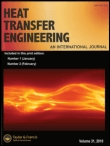
HEAT TRANSFER ENGINEERING
Exploring the frontiers of heat transfer and engineering excellence.HEAT TRANSFER ENGINEERING is a leading international journal published by Taylor & Francis Inc, dedicated to advancing the field of heat transfer and thermal engineering. With a strong focus on the key aspects of Condensed Matter Physics, Fluid Flow and Transfer Processes, and Mechanical Engineering, this journal covers a comprehensive range of topics from experimental studies to theoretical analysis, aiming to foster innovative research and practical applications. Since its inception in 1979 and continuing through 2024, the journal has established itself as an essential resource for researchers and industry professionals alike, reflected in its solid rankings within Scopus—holding a Q2 quartile classification in multiple engineering disciplines. Although not open access, the journal ensures broad accessibility through institutional subscriptions, making cutting-edge research readily available. With its rigorous peer-review process and commitment to quality, HEAT TRANSFER ENGINEERING plays a crucial role in shaping the future of thermal management solutions and engineering practices.